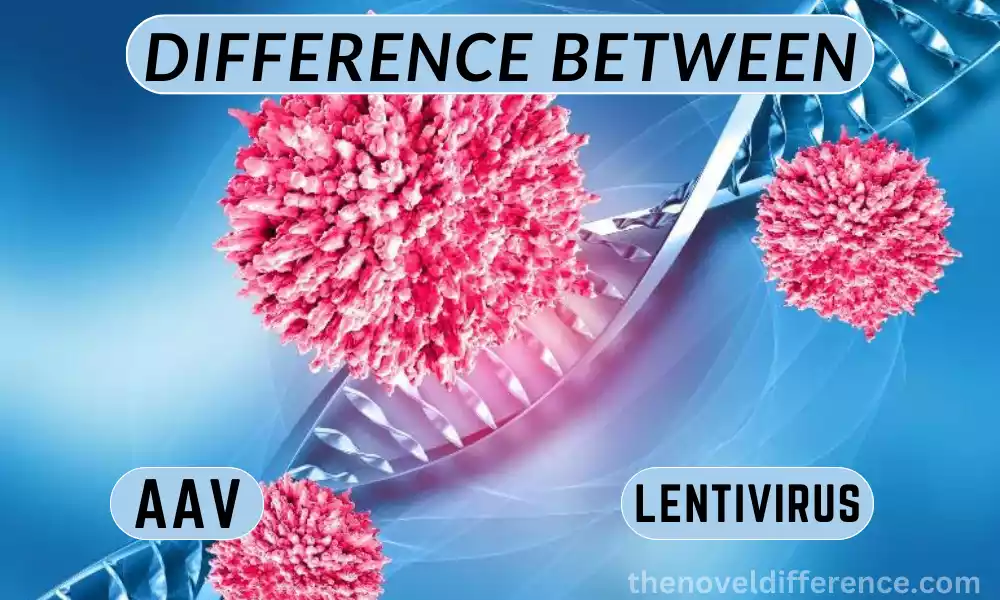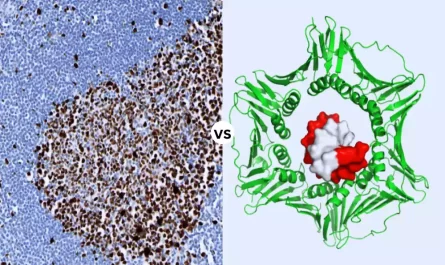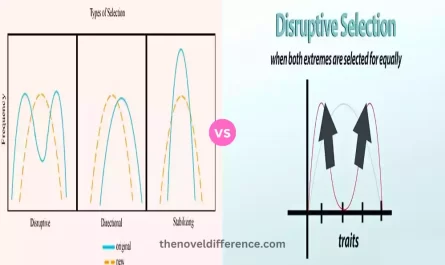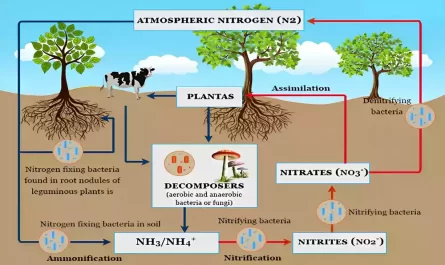Overview of AAV and Lentivirus
AAV (Adeno-Associated Virus):
Adeno-Associated Virus (AAV) is a small, non-enveloped virus belonging to the Dependovirus genus of the Parvoviridae family. It has a single-stranded DNA genome and is considered a relatively safe and efficient gene delivery vector.
Here is an overview of AAV:
- Structure: AAV has a simple structure consisting of a protein capsid surrounding its genetic material. The capsid is made up of three protein subunits: VP1, VP2, and VP3. The genome is packaged within the capsid and consists of two inverted terminal repeats (ITRs) flanking the transgene cassette.
- Advantages of AAV:
-
- High transduction efficiency: AAV can efficiently infect a wide range of dividing and non-dividing cells.
- Wide tropism: AAV exhibits broad host cell tropism, enabling it to infect various cell types.
- Long-term gene expression: AAV-mediated transgene expression can be long-lasting in many cell types.
- Low immunogenicity: AAV has a low immunogenic profile, reducing the risk of immune responses.
- Limitations of AAV:
-
- Limited cargo capacity: AAV has a limited packaging capacity of approximately 4.7 to 4.9 kilobases (kb), restricting the size of the transgene it can carry.
- Potential immune responses: Some individuals may have pre-existing neutralizing antibodies against AAV, which can impact its efficacy.
- Challenges in large-scale production: Generating large quantities of AAV vectors for clinical applications can be challenging.
- Applications of AAV:
-
- Gene therapy: AAV is widely used in gene therapy research and clinical trials to deliver therapeutic genes to target cells, offering potential treatments for genetic disorders.
- Gene editing: AAV vectors can be utilized in conjunction with gene editing technologies like CRISPR-Cas9 to facilitate precise genomic modifications.
- Gene expression studies: AAV vectors are valuable tools in studying gene function, regulation, and cellular processes.
Lentivirus:
Lentiviruses belong to the Retroviridae family and are enveloped viruses with a positive-sense RNA genome. They are capable of integrating their genetic material into the host cell’s genome, making them useful gene delivery tools.
Here is an overview of Lentivirus:
- Structure: Lentiviruses possess an envelope derived from the host cell membrane, which encloses the viral RNA genome. Inside the envelope, there are viral proteins, including reverse transcriptase, integrase, and protease, necessary for viral replication and integration.
- Advantages of Lentivirus:
-
- High transduction efficiency: Lentiviruses have high transduction efficiency when infiltrating both dividing and non-dividing cells, making them suitable for infection of numerous cell types.
- Large cargo capacity: Compared to AAV, lentiviruses have a larger packaging capacity, allowing for the delivery of larger transgenes or multiple genes.
- Stable integration: Lentiviral vectors integrate into the host cell’s genome, resulting in long-term transgene expression.
- Tropism: Lentiviruses exhibit broad tropism, infecting various cell types and tissues.
- Limitations of Lentivirus:
-
- Risk of insertional mutation: Integration of lentiviral vectors into the host genome may disrupt normal gene functions, creating a risk for insertional mutation.
- Potential immune responses: Similar to AAV, immune responses against lentiviral vectors can occur, affecting their efficacy.
- Variable gene expression: Transgene expression from lentiviral vectors can vary among different cell types and may be influenced by position effects and epigenetic factors.
- Applications of Lentivirus:
-
- Gene therapy: Lentiviral vectors are used in clinical trials for gene therapy applications, particularly in the treatment of genetic disorders.
- Cell Reprogramming & Differentiation: Lentiviruses are capable of delivering genes required for cell reprogramming & differentiation, such as inducing pluripotency and stimulating differentiation of stem cells like induced pluripotent cells (iPSCs).
- Cancer research and treatment: Lentiviral vectors deliver anti-cancer genes or RNA molecules to target and modify cancer cells for research purposes or potential therapeutic interventions.
AAV and Lentivirus are valuable gene delivery systems with advantages and limitations. The choice of vector depends on factors such as the target cell type, desired transgene size, long-term expression requirements, and safety considerations.
Definition and importance of gene delivery systems
Gene delivery systems are techniques or vehicles used to introduce genetic material, such as DNA or RNA, into target cells or organisms. These systems play a crucial role in the field of molecular biology, genetic engineering, and gene therapy.
Here’s a definition and explanation of the importance of gene delivery systems:
Definition: Gene delivery systems encompass a range of methods and tools designed to safely and efficiently transport genetic material into cells or organisms. These systems aim to overcome barriers and facilitate the transfer of exogenous genetic material, allowing it to be taken up and expressed within the target cells.
Importance of Gene Delivery Systems:
- Gene Therapy: Gene delivery systems are crucial for gene therapy, which involves the delivery of therapeutic genes into target cells to treat genetic disorders or other diseases. These systems help deliver functional copies of genes, correct genetic mutations, or introduce therapeutic RNA molecules to restore or modulate cellular functions.
- Genetic Engineering: In genetic engineering and research, gene delivery systems are employed to introduce specific genes or genetic modifications into cells or organisms. This enables scientists to study gene function, investigate biological pathways, and develop new biotechnological applications.
- Targeted drug delivery: Gene delivery systems are used to deliver therapeutics, such as antisense or siRNA oligonucleotides to target specific genes and cellular processes. This targeted approach allows for precise and efficient modulation of gene expression or interference with disease-causing genes.
- Basic Research and Disease Modeling: Gene delivery systems provide researchers with tools to introduce specific genes or genetic modifications into cells or organisms, allowing them to investigate gene function, study disease mechanisms, and develop disease models for research purposes.
- Cell Reprogramming and Tissue Engineering: Gene delivery systems play a vital role in cell reprogramming and tissue engineering approaches. They are used to introduce specific genes or factors into cells, allowing them to be reprogrammed into pluripotent stem cells or directed toward specific cell lineages for tissue regeneration or replacement.
- Vaccine Development: Gene delivery systems can be utilized to deliver genes encoding antigens to host cells, triggering an immune response and potentially eliciting protective immunity. This approach holds promise for the development of novel vaccines against infectious diseases or cancer.
The development of efficient and safe gene delivery systems is essential for advancing research, therapeutic interventions, and the understanding of genetic mechanisms. Continuous improvements in vector design, delivery methods, and targeting strategies contribute to the progress in gene delivery systems, enabling advancements in gene therapy, genetic engineering, and related fields.
AAV (Adeno-Associated Virus)
AAV (Adeno-Associated Virus) is a small, non-enveloped virus that belongs to the Dependovirus genus of the Parvoviridae family. It is considered a promising gene delivery vector due to its safety profile and efficient transduction capabilities.
Here are some key points about AAV:

- Structure: AAV has a simple structure consisting of a protein capsid that surrounds its genetic material. The capsid is composed of three main protein subunits, namely VP1, VP2, and VP3. The viral genome is a single-stranded DNA molecule that is packaged within the capsid.
- Transduction Efficiency: AAV exhibits high transduction efficiency, meaning it can efficiently enter target cells and deliver its genetic cargo. It can infect both dividing and non-dividing cells, making it versatile for various applications.
- Tropism and Target Cell Types: AAV has a wide tropism, meaning it can infect a broad range of cell types derived from different tissues and organs. This characteristic makes AAV attractive for targeting specific cell populations in gene therapy and research studies.
- Long-term Gene Expression: AAV-mediated gene expression can be long-lasting. Once the AAV genome is delivered to the target cell, it has the ability to persist and express the transgene for an extended period, offering the potential for durable therapeutic effects.
- Cargo Capacity: AAV has a limited cargo capacity compared to some other gene delivery vectors. It can accommodate genetic material of up to approximately 4.7 to 4.9 kilobases (kb). This size constraint can restrict the size of the transgene that can be delivered using AAV.
- Immunogenicity: AAV is known for its low immunogenicity, meaning it tends to induce minimal immune responses in most individuals. However, some individuals may have pre-existing neutralizing antibodies against AAV, which can impact its efficacy as a gene delivery vector.
- Applications: AAV has found extensive use in various applications, including:
-
- Gene Therapy: AAV is commonly employed in gene therapy approaches to deliver therapeutic genes to target cells and treat genetic disorders. It has been used in clinical trials for a range of conditions, including inherited genetic diseases and neurodegenerative disorders.
- Gene Editing: AAV vectors can be combined with gene editing technologies, such as CRISPR-Cas9, to facilitate precise genome modifications. This allows for targeted gene editing and correction of disease-causing mutations.
- Gene Expression Studies: AAV vectors are widely used in research to study gene function, regulation, and cellular processes. They enable researchers to introduce specific genes or RNA molecules into cells for functional analysis and investigation of biological pathways.
AAV holds great promise as a gene delivery vector due to its efficiency, safety, and long-term gene expression capabilities. Ongoing research and advancements in AAV vector engineering are focused on addressing limitations such as cargo capacity and immune responses, further enhancing its potential for therapeutic applications.
Lentivirus
Lentivirus is a genus of enveloped viruses belonging to the Retroviridae family. These viruses are well known for integrating their genetic material into host cell genomes, making them reliable tools for gene delivery and therapy applications.
Here are a few key details regarding Lentivirus:
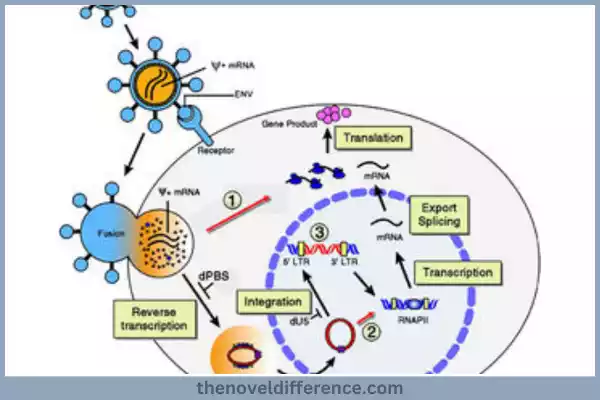
- Structure: Lentiviruses have an intricate composition derived from their host cell membrane. Within it lies an envelope made up of protein filaments encasing their viral genome RNA genome. Inside the envelope, there are viral proteins, including reverse transcriptase, integrase, and protease, that are necessary for viral replication and integration.
- Transduction Efficiency: Lentiviruses are highly efficient at transducing a wide range of target cells, including both dividing and non-dividing cells. This characteristic makes them suitable for various applications in both research and therapeutic settings.
- Tropism and Target Cell Types: Lentiviruses exhibit broad tropism, meaning they can infect and deliver genes to various cell types derived from different tissues and organs. They can be engineered to specifically target certain cell populations by modifying the viral envelope proteins or incorporating specific receptor-binding motifs.
- Stable Integration: One of the distinguishing features of lentiviruses is their ability to integrate their genetic material into the host cell’s genome. This integration allows for long-term transgene expression as the viral DNA becomes a permanent part of the host cell’s genetic material.
- Cargo Capacity: Lentiviruses have a relatively large cargo capacity compared to some other gene delivery vectors. They can accommodate larger transgenes or multiple genes, allowing for the delivery of more extensive genetic constructs.
- Immunogenicity: Lentiviral vectors can induce immune responses in some individuals. However, compared to other viral vectors like adenovirus, lentiviral vectors generally have a lower immunogenic profile, reducing the likelihood of significant immune reactions.
- Applications: Lentiviruses have been widely used in various applications, including:
-
- Gene Therapy: Lentiviral vectors have been extensively employed in gene therapy approaches to deliver therapeutic genes to target cells for the treatment of genetic disorders. They hold particular promise for diseases that require long-term or stable gene expression.
- Cell Reprogramming and Differentiation: Lentiviruses can be used to deliver genes involved in cellular reprogramming, allowing the generation of induced pluripotent stem cells (iPSCs) from differentiated cells. They are also utilized to direct cell differentiation by introducing specific transcription factors or genes.
- Cancer Research and Treatment: Lentiviral vectors are utilized in cancer research to study tumor biology and pathways. They can also be engineered to deliver anti-cancer genes or RNA molecules for potential therapeutic interventions.
Lentiviruses provide an effective means of delivering genes into target cells and have been instrumental in advancing gene therapy and research applications. Ongoing research focuses on improving their safety profiles, enhancing their delivery efficiency, and expanding their applicability in various disease treatments.
Comparison between AAV and Lentivirus
AAV (Adeno-Associated Virus) and Lentivirus are two commonly used gene delivery vectors with distinct characteristics.
Here’s a comparison between the two:
- Structure:
-
- AAV: AAV is a non-enveloped virus with a protein capsid surrounding its genetic material (single-stranded DNA). The capsid consists of VP1, VP2, and VP3 protein subunits.
- Lentivirus: Lentivirus is an enveloped virus with a lipid envelope derived from the host cell membrane. It contains a positive-sense RNA genome and viral proteins necessary for replication and integration.
- Transduction Efficiency:
-
- AAV: AAV exhibits high transduction efficiency and can infect both dividing and non-dividing cells. It has a broad tropism and can target various cell types.
- Lentivirus: Lentiviruses also have high transduction efficiency and can infect both dividing and non-dividing cells. They exhibit broad tropism, allowing them to infect a wide range of cell types.
- Integration into the Genome:
-
- AAV: AAV does not integrate its genome into the host cell’s genome efficiently. It typically remains as an episome or can integrate at low frequencies.
- Lentivirus: Lentiviruses integrate their genetic material into the host cell genome, providing stable long-term transgene expression. This integration allows for the potential of permanent modification of the host cell’s genome.
- Cargo Capacity:
-
- AAV: AAV has a limited cargo capacity, with a packaging limit of approximately 4.7 to 4.9 kilobases (kb). This restricts the size of the transgene it can accommodate.
- Lentivirus: Lentiviruses have a larger cargo capacity compared to AAV, allowing for the delivery of larger transgenes or multiple genes. They can accommodate the genetic material of several kilobases.
- Immunogenicity:
-
- AAV: AAV exhibits low immunogenicity, meaning it tends to induce minimal immune responses in most individuals. However, pre-existing neutralizing antibodies against AAV in some individuals can impact its efficacy.
- Lentivirus: Lentiviruses can induce immune responses in some individuals. However, they generally have a lower immunogenic profile compared to other viral vectors like adenovirus.
- Clinical Applications:
-
- AAV: AAV has been extensively used in gene therapy trials for various genetic disorders due to its safety profile and long-term gene expression capabilities. It is particularly suitable for diseases that require stable, sustained transgene expression.
- Lentivirus: Lentiviruses have also been employed in gene therapy trials for genetic diseases. Their ability to integrate into the host cell’s genome allows for long-term gene expression. Lentiviral vectors are also used in cell reprogramming and differentiation studies.
The choice between AAV and Lentivirus as gene delivery vectors depends on factors such as the target cell type, desired transgene size, long-term expression requirements, and safety considerations. Both vectors have their own advantages and limitations, and researchers carefully consider these factors when selecting the appropriate vector for their specific applications.
What are the Similarities Between AAV and Lentivirus?
While AAV (Adeno-Associated Virus) and Lentivirus have some distinct differences, they also share certain similarities as gene delivery vectors.
Here are some similarities between AAV and Lentivirus:
- Viral Vector Nature: Both AAV and Lentivirus are viral vectors that are derived from naturally occurring viruses. They have been modified and engineered for use as gene-delivery systems in research and therapeutic applications.
- Efficient Transduction: Both AAV and Lentivirus exhibit high transduction efficiency, meaning they can efficiently enter target cells and deliver their genetic cargo. They can infect a variety of cell types including dividing and nondividing cells.
- Wide Tropism: AAV and Lentivirus demonstrate broad tropism, allowing them to infect various cell types derived from different tissues and organs. This characteristic makes them versatile for targeting specific cell populations in gene therapy and research studies.
- Genetic Modification: Both AAV and Lentivirus can be engineered to carry and deliver desired genetic material, such as therapeutic genes or gene-editing tools, into target cells. This ability to modify their genomes allows for the introduction of specific genes or RNA molecules into cells for functional analysis or therapeutic purposes.
- Potential for Long-term Gene Expression: Both AAV and Lentivirus have the potential to provide long-term gene expression. While AAV typically remains as an episome or integrates at low frequencies, Lentivirus integrates its genetic material into the host cell’s genome, resulting in stable, long-term transgene expression.
- Utilization in Gene Therapy: AAV and Lentivirus are widely used in gene therapy research and clinical trials. They have shown promise for delivering therapeutic genes to target cells for the treatment of genetic disorders, and their safety profiles have been extensively studied.
While AAV and Lentivirus have their own unique characteristics and applications, their shared attributes make them valuable tools for gene delivery and research purposes. Researchers consider these similarities when choosing the most appropriate vector for their specific experimental or therapeutic needs.
Conclusion
AAV (Adeno-Associated Virus) and Lentivirus are both widely used gene delivery systems with distinct characteristics and applications. AAV is a non-enveloped virus that exhibits high transduction efficiency and can infect a broad range of cell types. It has a limited cargo capacity but offers long-term gene expression potential. AAV is commonly utilized in gene therapy and gene expression studies.
On the other hand, Lentivirus is an enveloped virus known for its efficient transduction of both dividing and non-dividing cells.It can integrate the genetic material of its host into the genome of that cell, allowing stable and long-term expression. Lentivirus has a larger cargo capacity compared to AAV and finds applications in gene therapy, cell reprogramming, and cancer research.
While there are differences between AAV and Lentivirus, they also share similarities. Both vectors demonstrate high transduction efficiency, broad tropism, and the potential for long-term gene expression. They are utilized in gene therapy research and can be engineered to deliver therapeutic genes or gene-editing tools.

